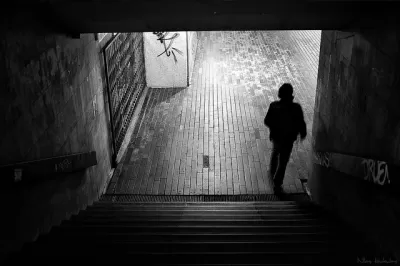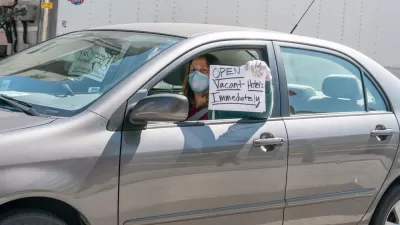With rapidly urbanizing metro areas, some cities are not looking to build up, or spread out, anymore. Rather they have begun to grow into underground spaces.

Flavia Krause-Jackson, Kati Pohjanpalo, and Sharon Chen contributed to a piece in Bloomberg News regarding underground development. With limited space, and sky-rocketing real estate prices, some cities are looking down to create much needed space.
As Clara Irazábal, assistant professor at the Graduate School of Architecture, Planning and Preservation at Columbia University, shared with the writers, "[t]here are real opportunities to develop underground to accommodate density for cities that are already overcrowded or growing... It can expand efficiency, reduce commuting times and improve quality of life."
A perfect example is in the third-most densest sovereign nation, Singapore. With a huge population of 5.4 million crammed onto a tiny 277 square mile island, wealthy Singapore's skyline is already jammed with more than 4,000 high-rises. This month, Singapore opened an underground oil-storage facility, "freeing space three times the size of New York’s Grand Central Station for chemical manufacturing above ground. The project caps a 30-year effort to create a petrochemical hub. It began when officials merged seven offshore islets and then spent S$950 million ($749 million) to dig rock caverns that can hold enough liquid hydrocarbon to fill 600 Olympic-sized swimming pools."
The piece describes efforts utilizing underground space in places like Helsinki, Beijing, and New York City.
FULL STORY: People Plunge Underground to Work and Play as Streets Above Get Crazy Crowded

Study: Maui’s Plan to Convert Vacation Rentals to Long-Term Housing Could Cause Nearly $1 Billion Economic Loss
The plan would reduce visitor accommodation by 25,% resulting in 1,900 jobs lost.

North Texas Transit Leaders Tout Benefits of TOD for Growing Region
At a summit focused on transit-oriented development, policymakers discussed how North Texas’ expanded light rail system can serve as a tool for economic growth.

Why Should We Subsidize Public Transportation?
Many public transit agencies face financial stress due to rising costs, declining fare revenue, and declining subsidies. Transit advocates must provide a strong business case for increasing public transit funding.

How to Make US Trains Faster
Changes to boarding platforms and a switch to electric trains could improve U.S. passenger rail service without the added cost of high-speed rail.

Columbia’s Revitalized ‘Loop’ Is a Hub for Local Entrepreneurs
A focus on small businesses is helping a commercial corridor in Columbia, Missouri thrive.

Invasive Insect Threatens Minnesota’s Ash Forests
The Emerald Ash Borer is a rapidly spreading invasive pest threatening Minnesota’s ash trees, and homeowners are encouraged to plant diverse replacement species, avoid moving ash firewood, and monitor for signs of infestation.
Urban Design for Planners 1: Software Tools
This six-course series explores essential urban design concepts using open source software and equips planners with the tools they need to participate fully in the urban design process.
Planning for Universal Design
Learn the tools for implementing Universal Design in planning regulations.
City of Santa Clarita
Ascent Environmental
Institute for Housing and Urban Development Studies (IHS)
City of Grandview
Harvard GSD Executive Education
Toledo-Lucas County Plan Commissions
Salt Lake City
NYU Wagner Graduate School of Public Service





























